Introduction
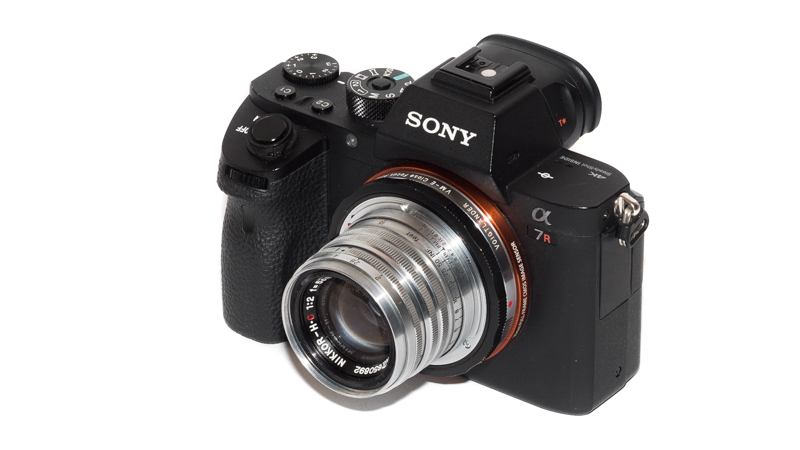
This review covers the Nikkor-H 50mm 2.0 rangefinder lens, it may be a stop slower than its faster f/1.4 brother but shares the same great build quality. Might this be the better Nikkor 50mm rangefinder lens in the end? Read on to find out!
Sample Images
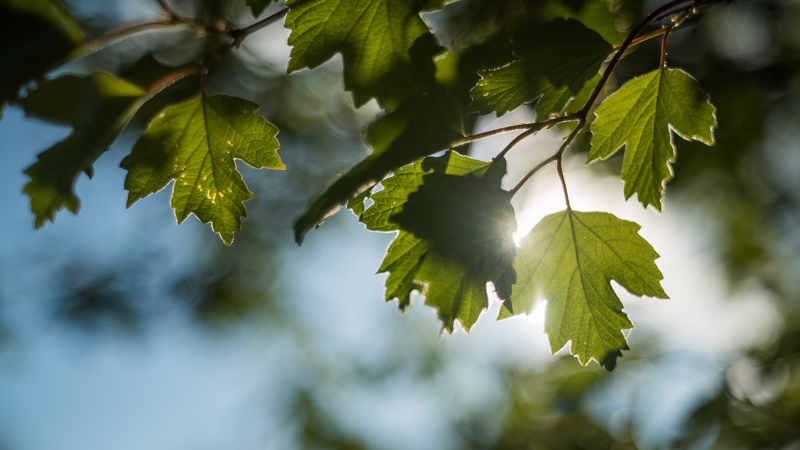

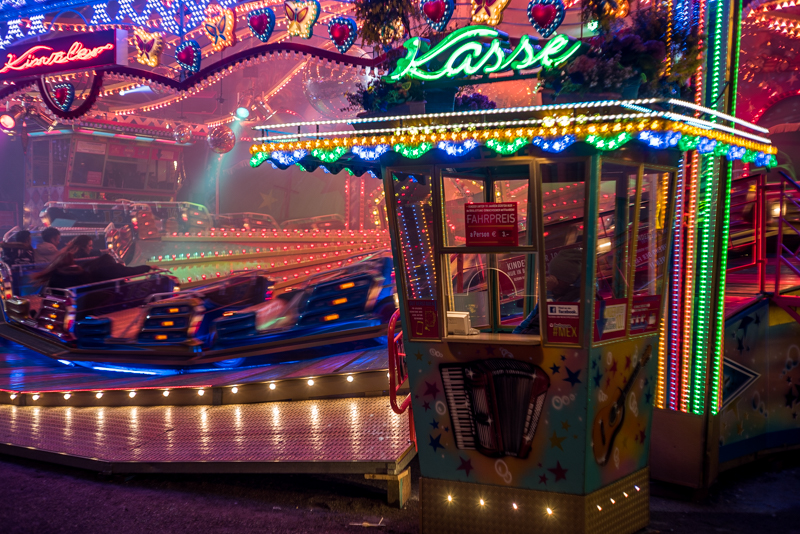
You can find most of the shots in this review in full resolution here.
Specifications / Version History
This lens was available with Nikon-S rangefinder mount and Leica M39 (or LTM) mount. I am reviewing the latter which has the following specifications:
-
- Diameter: 47 mm
- Field of view: 46° (diagonally)
- Length: 34 mm + adapter
- Weight: 225g + adapter
- Filter Diameter: E40.5 (not M40.5!)
- Number of Aperture Blades: 10 (rounded)
- Elements/Groups: 6/3
- RF coupled close focusing distance: 1.0 m (~0.45 m in macro mode)
- Maximum Magnification: 1:17 (~1:6.5 in macro mode)
- Mount: M39 / LTM
You can try getting one of these used from ebay.de starting at 150$/250€ (affiliate link).
Handling / Build Quality
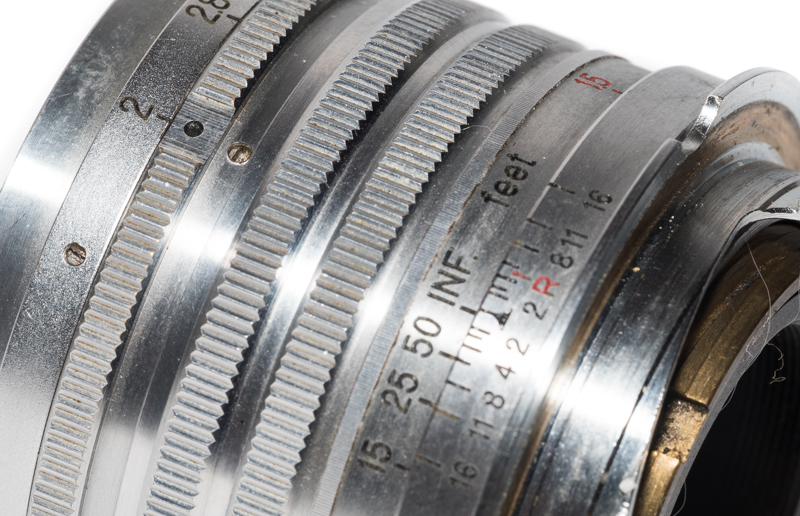
Build quality is pretty much the same as on the Nikkor-S 50mm 1.4, so in case you have already read that review you might skip this part.
The focusing ring has a locking mechanism for infinity, to turn the focusing ring at all you have to push a little button down.
The focusing ring also has a click stop at 1.0 m (~3.3 ft) which separates the rangefinder coupled focusing range (1.0 m to infinity, 120°) from the macro range (0.45 m to 1.0 m, 180°).
This is actually such an ingenious design, I absolutely can’t understand this hasn’t been adapted more often by other manufacturers since (the only modern lens I know of that features a similar design is the Voigtlander 12mm 5.6 M39).
The aperture ring features very nice full-stop click-stops.
The lens is made from chrome/brass and therefore feels very solid and quite heavy for its size. It also features a much more complex design compared to the Nikkor-P 85mm 2.0 with a non rotating front barrel, so using a polarizer isn’t a problem, in case you can find one with the right thread (E40.5).
Vignetting / Colorcast
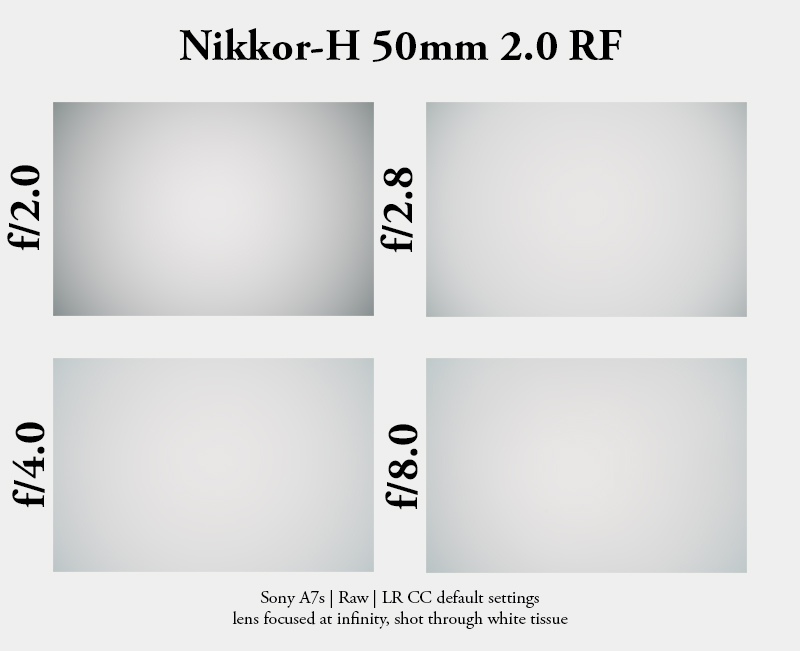
Wide open there is noticeable vignetting of roughly 2.0 EV, stopped down to f/2.8 this improves to 1.3 EV, at f/4.0 vignetting is only 0.9 EV and at f/8.0 it is still 0.9 EV. This is a similar performance compared to the faster Nikkor-S 50mm 1.4.
I can also notice a slight color cast towards the edges on the A7s and A7rII, which I felt the urge to correct for some shots.
Sharpness
infinity
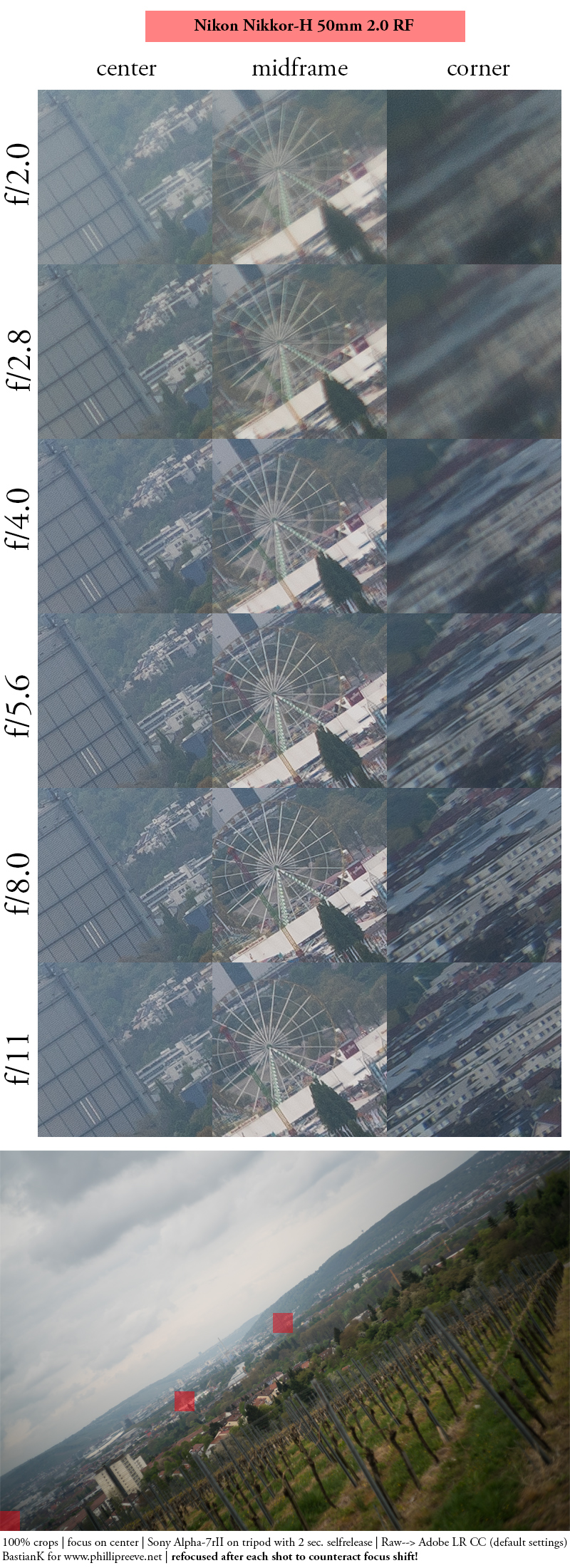
At f/2.0 there is significantly reduced contrast all over the frame, center shows ok resolution, midframe and corners are lacking. Stop down to f/2.5 and the contrast improves significantly, but it needs stopping down to f/5.6 for the midframe to look good f/11 for the corners. Across frame sharpness stopped down is definetly better compared to the Nikkor-S 50mm 1.4 and also a bit better than the Jupiter-3 50mm 1.5 at the same aperture.
close focus (100 cm)
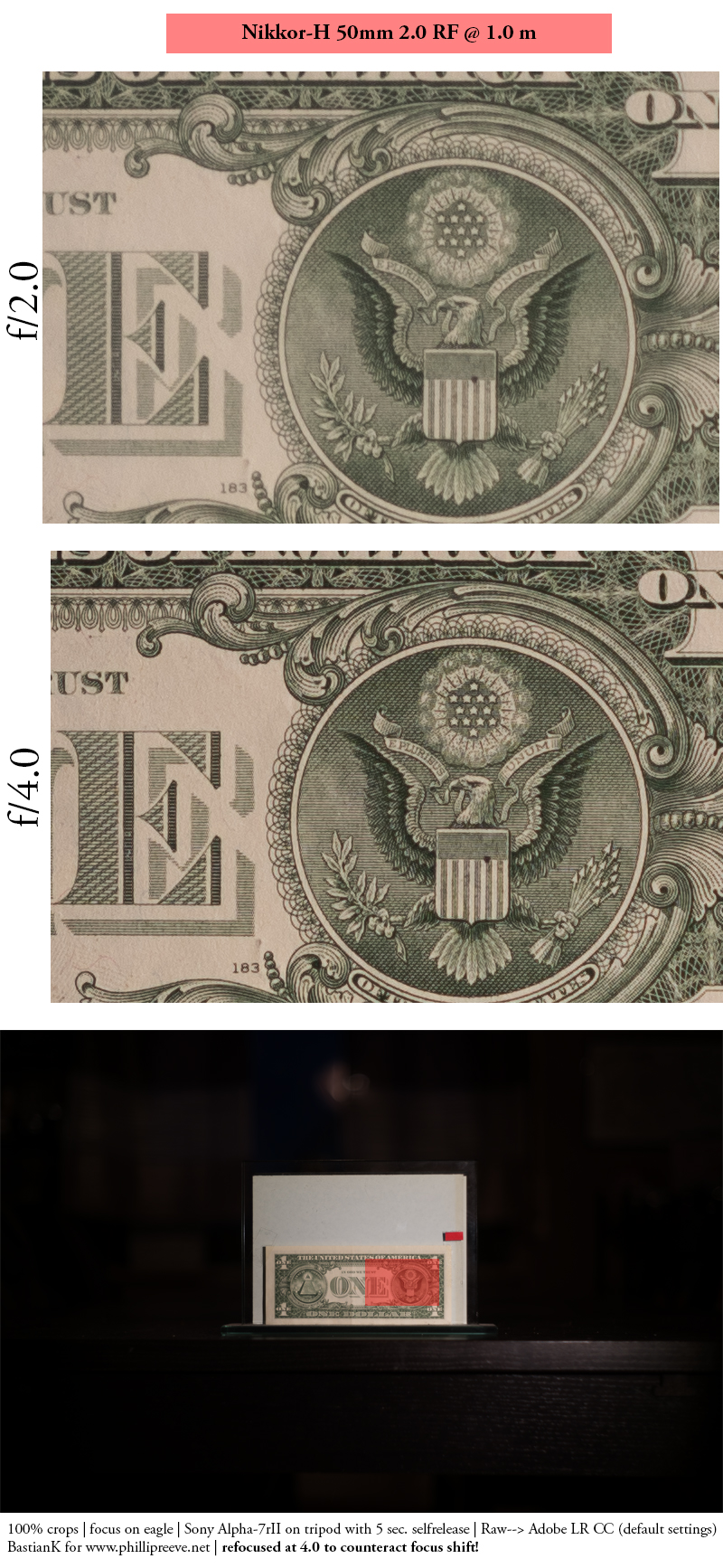
close focus (45 cm in macro mode)
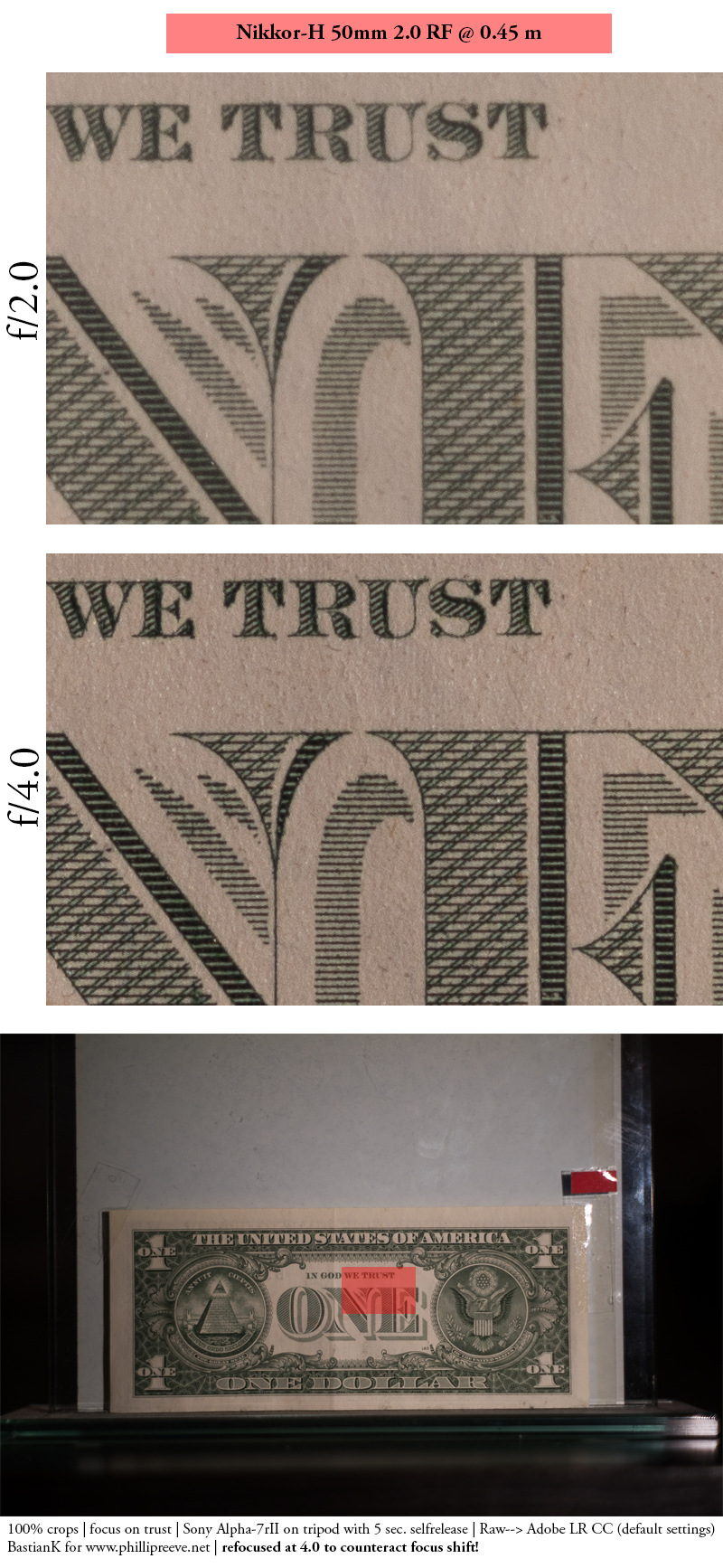
At the native minimum focus distance of 100 cm the lens shows somewhat dampened contrast wide open. It needs stopping down to f/4.0 for very good performance on the 42mp sensor.
At the extended minimum focus distance of 45 cm in macro mode the situation is pretty much the same: soft at f/2.0 but sharpness improves considerably on stopping down to f/4.0.
I also had to refocus the lens stopped down because of significant focus shift, see the corresponding section farther down this review.
Flare resistance
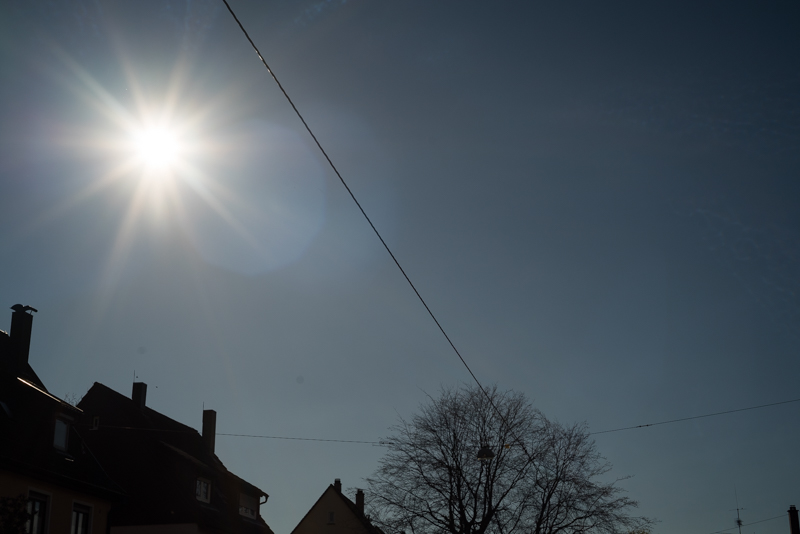
The performance of the Nikkor-S 50mm 1.4 was the worst I have ever seen, but luckily the 50mm 2.0 fares a bit better here. Nevertheless you will often find ghosts with the sun in the frame, contrast is somewhat lowered and you might even catch rainbow artifacts.

Distortion
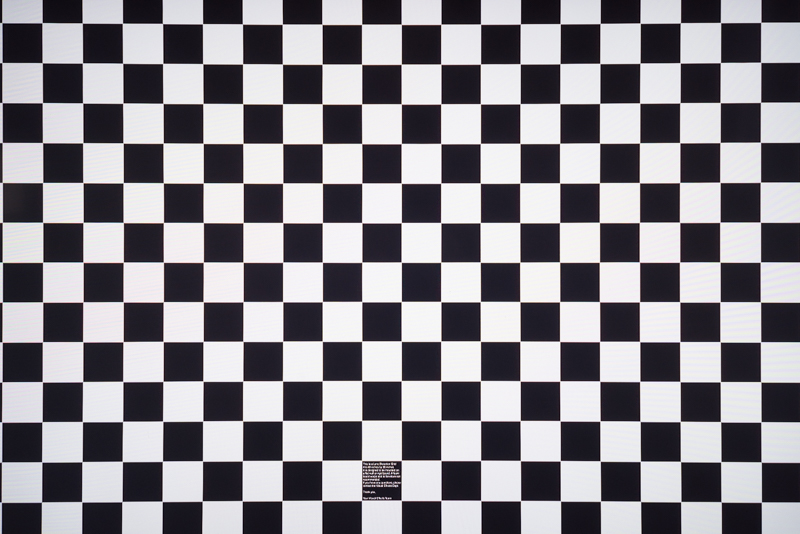
Only very minor (linear) pincushion distortion.
Bokeh
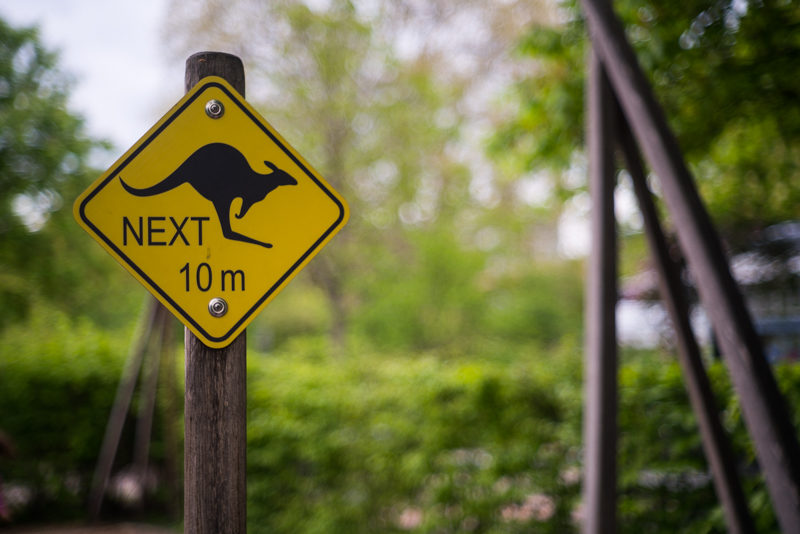
I was quite happy with the bokeh in general. Compared to the Jupiter-3 50mm 1.5 and the Nikkor-S 50mm 1.4 wide open or at f/2.0 bokeh is definetly smoother here. Depending on background and focusing distance you might still see some outlining around light discs but not as distracting as with the other two lenses.
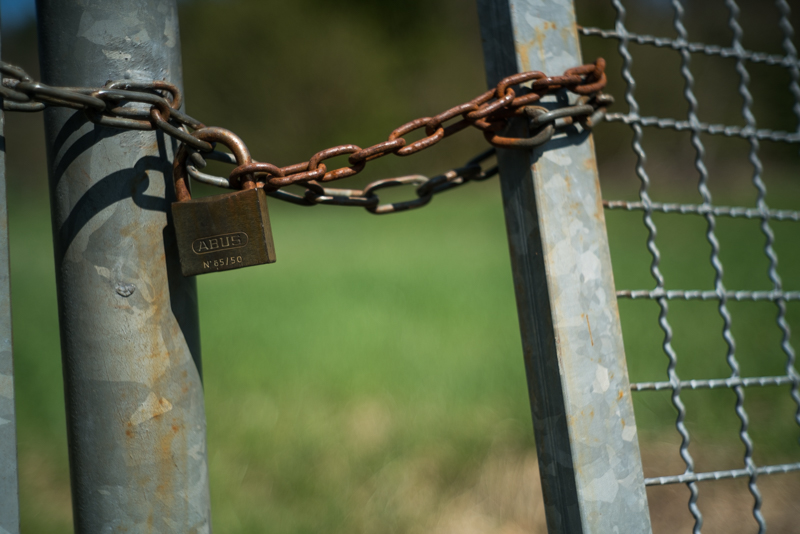
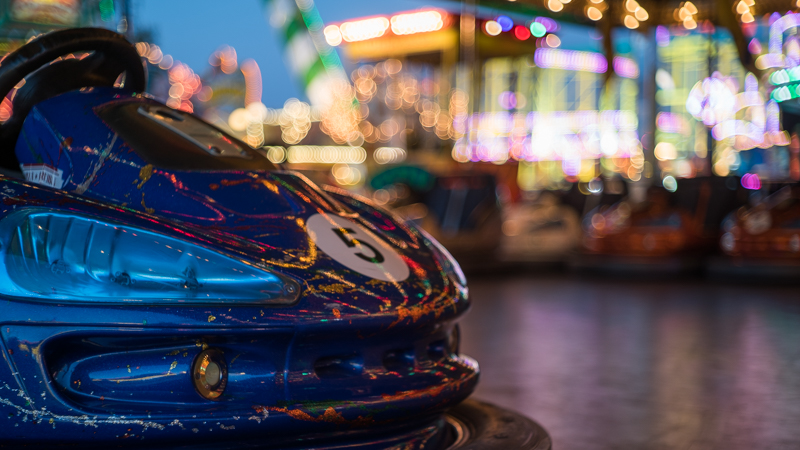
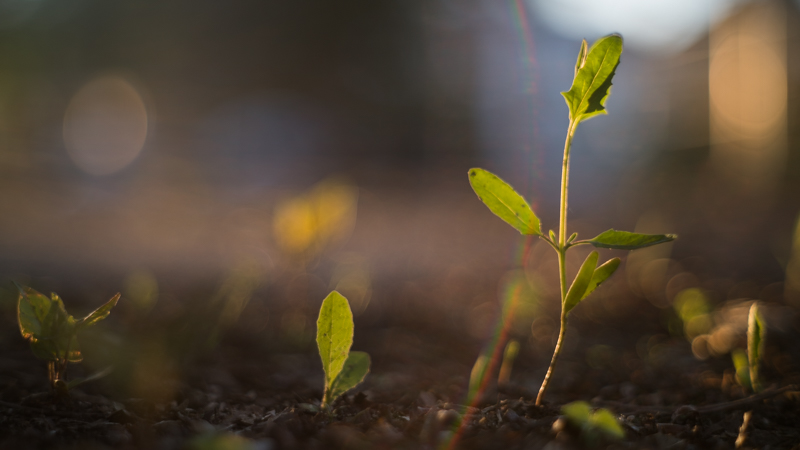
Sunstars
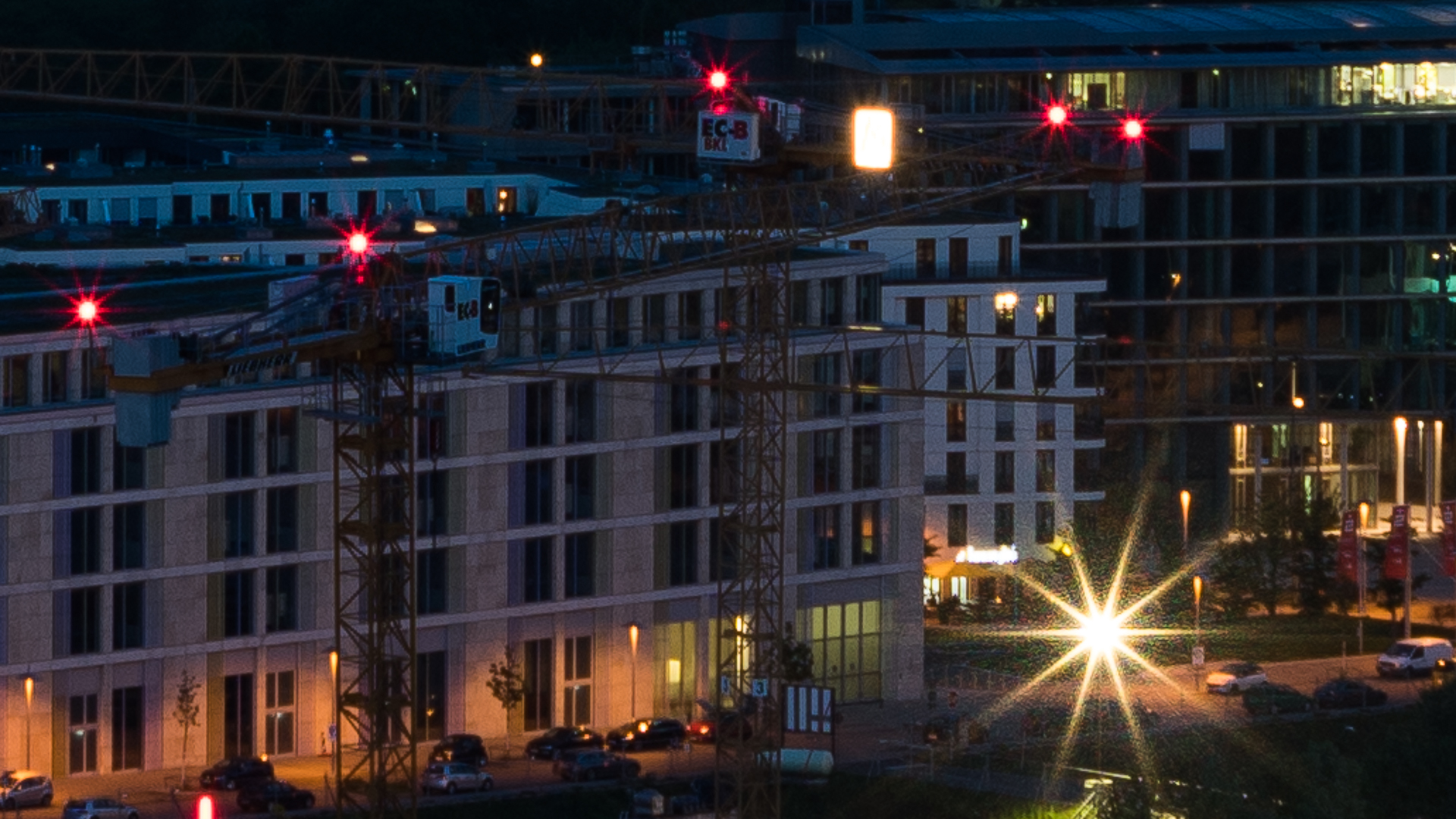
This lens features 10 rounded aperture blades which will yield 10-pointed sunstars around point light sources. They are actually quite well defined and I like them, but as this is a highly subjective topic you might want to have a look at this article and decide for yourself what you prefer.
Chromatic aberrations
longitudinal
Sony A7rII | Nikkor-H 50mm 2.0 RF | 50% crop | before: f/2.0, after: f/2.8
LoCA correction is pretty decent. You can see only very slight green outlining behind the plane of focus and purple outlining in front of it wide open. Stopping down naturally further improves the performance, as can be seen in the example above.
lateral
Correction of lateral CAs is one of the best I have ever seen. I couldn’t trace any in the shots I took.
Focus shift
Most (old) Sonnar designs are plagued by focus shift and unfortunately the Nikkor-H 50mm 2.0 is no exception here. Focus shift describes the effect of the plane of optimal focus shifting on stopping down. This is actually less of an issue with the A7 cameras as you will most of the time stop down first and focus after that, but more of a problem with most Leica rangefinder cameras.
Nevertheless, the focus shift between f/2.0 and f/2.8 is pretty much negligible, but when stopping down to f/4.0 you should definetly adjust the focus.
Alternatives
When it comes to fast 50mm legacy lenses there are many to choose from. I will therefore mainly cover the similarly sized rangefinder lenses here.
Nikkor-S 50mm 1.4 and Jupiter-3 50mm 1.5:
I often cross referenced these lenses above already. The Nikkor-H is a stop slower but apart from this I think it is the better lens.
Jupiter-8 50mm 2.0:
I did not yet get the chance to use this lens personally but from what I have seen it seems to offer similar optics but considerably worse build quality.
Voigtländer Nokton 50mm 1.5 Asph:
This is the modern affordable small rangefinder 50mm 1.5. It is a high contrast lens with nice bokeh and great build quality. I like it and still have it.
Zeiss ZM C Sonnar 50mm 1.5 T*:
This is the modern interpretation of the 50mm Sonnar lens. Unfortunately I did not yet get the chance to try this one myself but from what I have read and seen so far, this lens combines the Sonnar rendering with modern coatings and hugely improved performance wide open in terms of sharpness and contrast and costs a little more than the Nokton.
Leica 50mm lenses:
If you want a lens as fast you can take a look at one of the many versions of the Summilux 50mm 1.4, I haven’t used any and they are all very expensive. If you can get by with a maximum aperture of f/2.0 you may also take a look at one of the different Summicron-M 50mm 2.0 lenses but they will also be way more expensive and I am certainly no expert on these lenses either.
DSLR 50mm lenses:
One can find very cheap lenses here with good optical qualities, but they will be much bigger and the really good ones ain’t as cheap anymore as well. You can of course take a look at some of the 50mm reviews on this blog.
Conclusion
good
|
average
|
not good
|
From the three Nikkor rangefinder lenses I got the chance to review the Nikkor-H 50mm 2.0 offers the most even performance. It has the same great build quality as its faster brother but does not have to deal with such serious flare issues and delivers better across frame sharpness stopped down. It also does not show much glow wide open and placing a subject off center still yielded nice results.
Rating the bokeh gave me quite a headache (once more). I don’t think it is as good as the Voigtlander 50mm 1.5 or even some modern DSLR designs, but I still think it is better than the Nikkor-S 50mm 1.4 or the Jupiter-3 50mm 1.5 in this regard.
If you don’t mind stopping down to f/11 for best across frame sharpness, you like well defined like 10-stroke sunstars, value very high build quality but can’t – or don’t want to – afford the Loxia 50mm 2.0 this might be a nice alternative for you.
You can try getting one of these used from ebay.de starting at 150$/250€ (affiliate link).
Sample Images
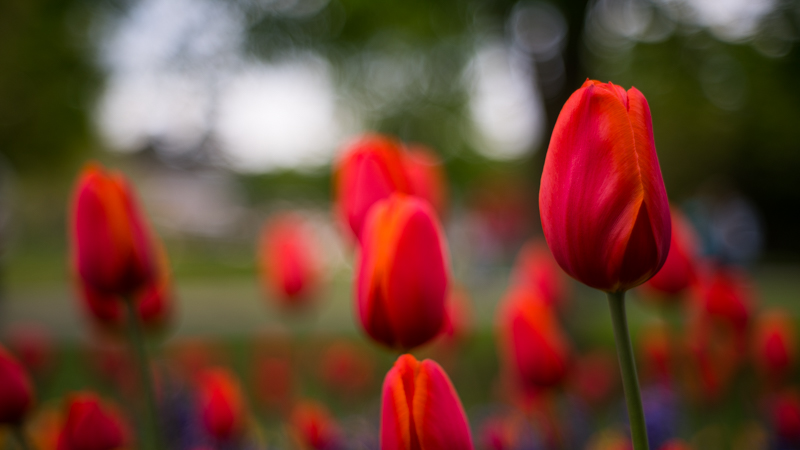
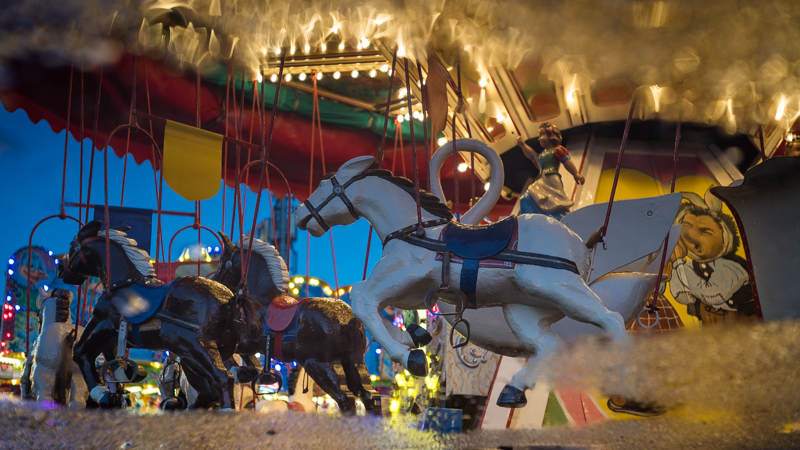
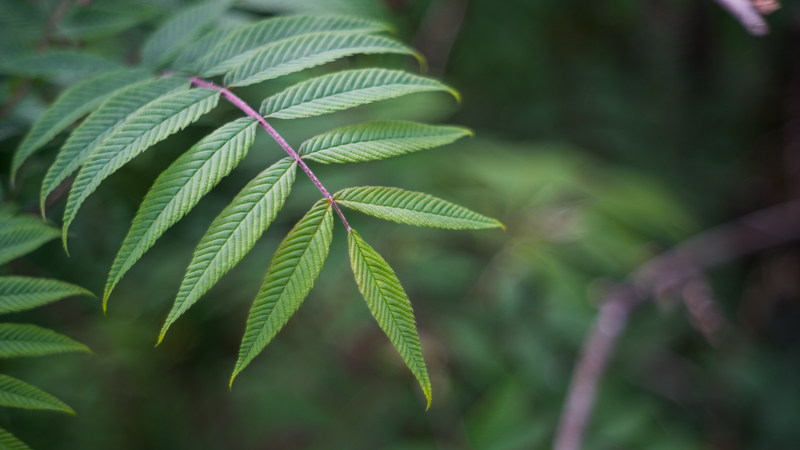
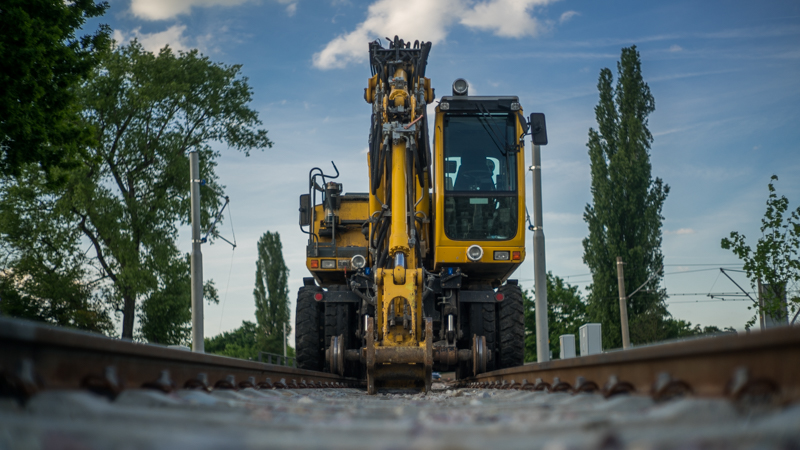
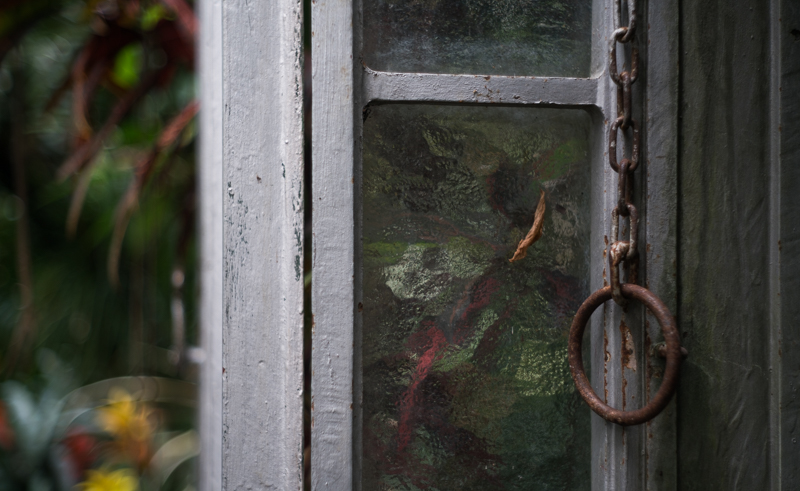
You can find most of the shots in this review in full resolution here.
Further Reading
Support Us
Did you find this article useful or just liked reading it? Treat us to a coffee!
![]()
![]()
![]() via Paypal
via Paypal
This site contains affiliate links. If you make a purchase using any of the links marked as affiliate links, I may receive a small commission at no additional cost to you. This helps support the creation of future content.
Latest posts by BastianK (see all)
- Review: Nikon Nikkor 105mm 1.8 Ai-s - December 28, 2025
- 2025 – Year in Review - December 23, 2025
- Review: Sony FE 70-200mm 4.0 G Macro OSS II - December 20, 2025


Hi BastianK, I’m a new wannabe photographer, and I start with Nikon D3400 and the kit Lens, do you have any recomandations In therms of lens that I might need, or should I just sell the kit lens and buy something else?
Keep using the kit lens until you know what specifically you need or want.
Hi, nice reviews you´ve done, congrats.
BTW Focus shift is observed when you use a rangefinder but in a mirrorless how could you detect this?
BR
Enzo
Hey,
it is easy: you focus at maximum aperture and then you stop down the lens.
If the stopped down image is worse than the wide open one but can be improved by refocusing you are dealing with focus shift.